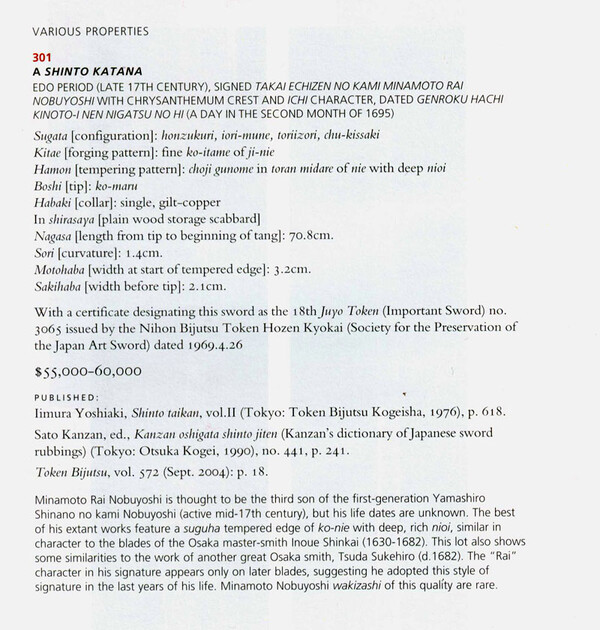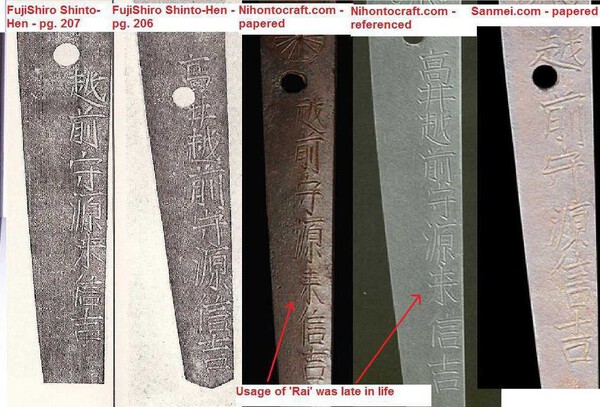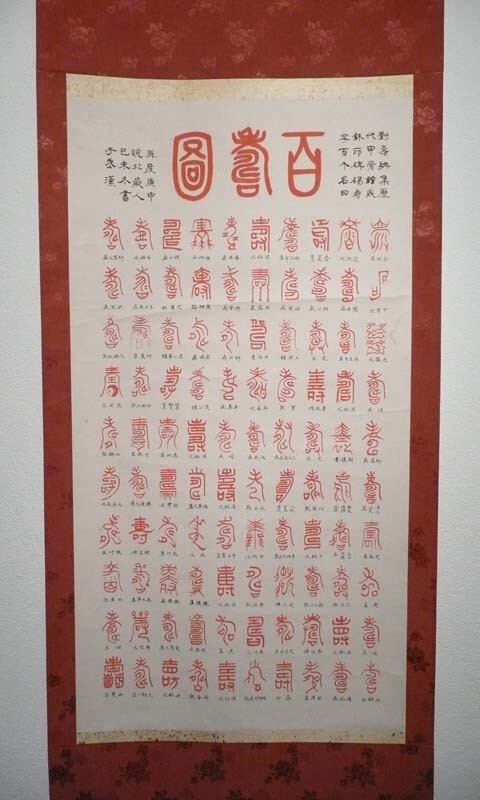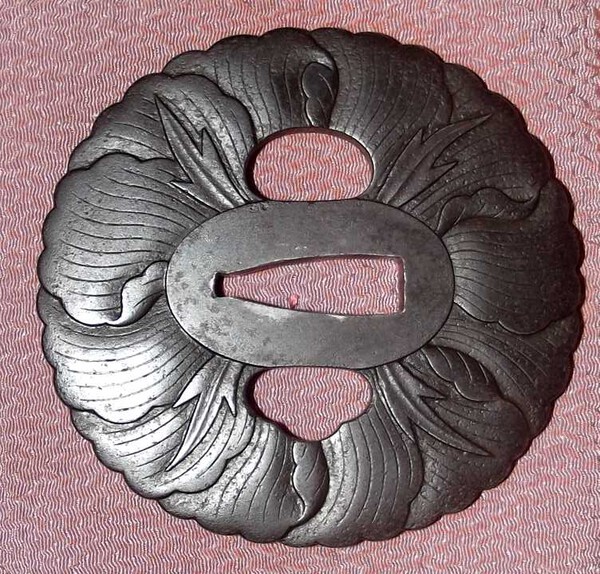-
Posts
435 -
Joined
-
Last visited
Content Type
Profiles
Forums
Events
Store
Downloads
Gallery
Everything posted by Lance
-
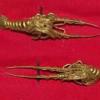
Deutch auction house way too low estimate
Lance replied to Jorgensen's topic in Auctions and Online Sales or Sellers
Custodian is a good term, I wonder what weighs more heavily, the value or future care of a favorite sword or tosogu? (something perceived as valuable will usually receive better care though) Regards, Lance -
Not sure about shira saya, but for a mounted tachi I always thought one of the main reasons for being displayed point up-tsuka down is a a balance/safety issue as the tsuka nakago section is heavier, making it more stable and also to protect the point. If the blade was displayed point down it increases the chance can it slide down and damage it if the mekugi or tsuka was loose? sword pictured below from Bonhams looks like it's about to fall over http://www.bonhams.com/auctions/17513/lot/3163/ Regards, Lance
-
I don't think it's Shinto, when I suggested later smiths from the two links posted I meant the Koto smiths in the links I posted who were working during the 1500's. Regards, Lance
-
I think late Yamashiro (Heianjo) might be a good avenue to look into, They shared some similarities to Ise Sengo and Mino school. Had these links below saved from when researching a Heianjo Yoshifusa tanto I used to have. http://www.sho-shin.com/heianjo.html http://www.sho-shin.com/kurama.htm Regards, Lance Regards, Lance
-
I think the (possibly) Christian aspect is the cross inside the tree? (oops, should have read Brian's post more closely, already mentioned it) Regards, Lance
-
Nice looking sword, In the posts above it was mentioned that the sword could be Shinshinto it reminded me of something; Besides the revival of Nambokucho sugata with oversized blades, I remember reading that some of the late Edo/Meiji Samurai also favored this martial type of koshirae with bright colored saya. What I don't remember is if these were the loyalists who wanted to overthrow the Shogun, or members of Kabukimono gangs (variously tied to the Yakuza, disaffected ronin, or samurai version of juvenile delinquents?) Anyone familiar with this bit of history? Regards, Lance
-
Hello, Nope, I'm not sure. I have seen it mentioned numerous times while learning more about this group though. I did a quick web search and came up with the link below that contains the attached images from a Christie's auction mentioning the use of Rai later in life and a link to the source for these. http://www.nihontocraft.com/Owazamono_N ... atana.html I had other articles and references I gathered about this line of smiths I saved but passed them along with the naginata to the new owner when I traded it. Regards, Lance
-
Shinano no Kami Minamoto Nobuyoshio was used by 3 generations of Shinto smiths starting from around 1643 and were considered part of the Mishina School. (I believe there were supposed to be 3 generations with the 3rd signing Echizen Rai instead of Shinano no kami) I used to have a Naginata by the first or second generation dated 1658 that I enjoyed a lot. From Fujishiro's Shinto volume NOBUYOSHI SHINANO NO KAMI SHODAI [sHÔHÔ 1644 YAMASHIRO] SHINTÔ CHÛJÔSAKU He lived in Heianjô, and (blades in which he inscribed) KIKU MON are also seen. He was a smith between the years of Kan'ei and Kanbun. (Wazamono) Signatures: SHINANO NO KAMI FUJIWARA NOBUYOSHI YAMASHIRO KUNI FUJIWARA NOBUYOSHI Page 206 NOBUYOSHI SHINANO NO KAMI NIDAI [ENPÔ 1673 YAMASHIRO] SHINTÔ CHÛJÔSAKU He is also called Takai Kinsaburô, and he also lived in Osaka. At first he called himself FUJIWARA, and he later changed to MINAMOTO. Signatures: RAKUYÔ JÛ SHINANO NO KAMI MINAMOTO NOBUYOSHI SHINANO NO KAMI FUJIWARA NOBUYOSHI Below are some links and a group of oshigata I had saved. http://www.sanmei.com/contents/en-us/p1403.html http://www.sanmei.com/contents/media/Y2 ... _PUP_E.htm http://www.nihontocraft.com/Mishina.html (info towards bottom of page) Regards, Lance
-
I don't know why anyone would "cringe" at this chart: It's an easy to read comparison of the different levels of papers by both groups and when they were issued. Concern as to wether the different designations line up correctly to current comparison is a valid concern (NTHK Shinteisho starts too low on the chart and maybe hozon should be a little closer to kicho) but it's still useful as a rough outline to answer the original question. Regards, Lance
-
I think I understand the question, whoever submitted the blade wanted a second opinion and the NTHK papers are probably newer (supposedly some green koshu tokubetsu kicho papers can be questionable) If the NTHK papers were Shinteisho level the judgement would be lower, if Kanteisho level it would be a level similar to NBTHK paper Below is a chart for comparison of different origami http://japaneseswordindex.com/origcomp.htm Regards, Lance
-
From the pictures it looks better than what it did before, but it appears that the whole blade was (quick) polished? I thought opening a window (polish) was only done on 3-4 inches of a blade? Regards, Lance
-

Antique Arms Show Las Vegas
Lance replied to raiden's topic in Sword Shows, Events, Community News and Legislation Issues
I think it's this one? http://www.antiquearmsshow.com/ Most of the antique arms (gun)shows I've been to do discourage or mot allow photography inside as you wrote though. Regards, Lance -

Iron fuchi with old symbols in relief
Lance replied to Alex A's topic in General Nihonto Related Discussion
Sory jean, I didn't notice my poor spelling , I found the post that you were referring to, the discussion and table shown in it might be useful: viewtopic.php?f=15&t=12096&hilit=ancient+KANJI+designs Regards, Lance -

Iron fuchi with old symbols in relief
Lance replied to Alex A's topic in General Nihonto Related Discussion
There was a change in attitudes during this time period, especially where swords are considered, that's why this time period is often referred to as Shin-Shinto Revival, many Shinto period swords when tested broke, I don't know how many times I've seen it written that Edo period swords were criticized for their flamboyant Hamon that tended to be too hard and cracked when actually used, I've lost count. This led to an attempt to revive the old Koto ways of sword production, recreating the hamon and hada of these old swords. Also this revival period saw Handachi koshirae became more popular again looking back towards the past. Aside from the swords themselves after 100's of years of relative peace the Samurai became bureaucrats who were in danger of no longer being warriors, supplementing their income by becoming craftsmen or even worse, allowing merchants into their families through marriage or adoption This was the period when most of what is known as the code of Bushido was codified (From what I understand it was written down in the mid to late 1600"s, and would have had a very strong influence on the generation growing to adulthood in the early 1700's) Plus Hagakure, there was definitely (at least a romantic) desire to return to the old days when the Samurai were warriors first, scholars and poets second. Regards, Lance -

Iron fuchi with old symbols in relief
Lance replied to Alex A's topic in General Nihonto Related Discussion
I think your fuchi looks to be from the 1700's to 1800's. From my (limited) experience in general the height of earlier fuchi were lower during Edo/Momoyama times, the use of the older style kanji might have been due to due to a change in tastes and altitude during the Shin-Shinto period: many Samurai and Sword smiths started to look down on the Edo period swords and koshirae as somewhat decadent and wanted to revive the Koto style of sword making. The gold inlay looks like it was intentionally made to look worn, (not a bad thing!) and matches well with the archaic symbols. Regards, Lance -
For what it's worth, I think the "demon" getting his tongue pulled out looks like it's supposed to be Shoki the demon queller being tortured by two female ghosts/oni. The other side looks like his sword and hat are on the reverse, maybe that's why he finds himself in this in the predicament. (this is assuming I'm not trying too hard to interpret the un-interpretable ) See pic below of Shoki For the tongue part there is a story of Ouni, a mountain hag with a mouth stretching from ear to ear and a thick coat of long, black hair covering her entire body. According to an old Niigata prefecture legend, Ouni appeared one day to a group of women as they were spinning hemp into yarn. After accepting the hairy hag's offer to help, the women watched in surprise as she repeatedly placed raw hemp fiber into her mouth and pulled out finished yarn, then suddenly disappeared. (2nd pic) Regards, Lamce
-
I'd say your tsuba is for a katana: in general tsuba 3 inches (7.62 centimetres) and over are considered katana size. There's no hard and fast rules though with many exceptions, especially for different eras. Koto uch-gatana were supposedly mounted with smaller tsuba, and some shin-shinto swords were mounted with really large guards to go with the big swords made during these times. I don't think the holes matter that much, they went on to be incorporated into tsuba wether they'd be needed or not. Most katana saya didn't include a kogai or kozuka pocket, again there are exceptions like Higo koshirae or something special made for a wealthy Samurai. Regards, Lance
-
Although there's no handle on it, looks like a broom and the animal is a rat, a symbol of good fortune/luck in an odd way. During times of famine or a bad harvest no rats, when food is plentiful the rats are too, so seeing them would be a good omen. So much food in the storehouse you have to sweep the rats out with a broom! Daikokuten, the god of wealth and good luck is often depicted with rats as well. Below is a (poor quality image, I couldn't find a higher resolution example) of a fuchi kashira, compare the broom on the kashira to your tsuba, hope this is useful. Regards, Lance
-
I think the tsuba might have originally had Kaga style Zogan (inlay) Maybe done in gold or at some point a previous owner thought it was and removed it all, posted a pic for comparison. Regards, Lance took example from here (finding it is like Where's Waldo but it's a great website to browse through)http://home.comcast.net/~ColHartley/VirtualMuseum/VirtualMuseumJapaneseArmor.htm Regards, Lance
-
I think the bulk of Nagayama's Connoisseur's Guide to Japanese Swords was originally written as a kantei guide for sword lovers in Japan; it gives the clearest indicators of what would be considered a kantei point basically one of an accumulation of the different types blade shapes, activities and workmanship in a sword's to identify age, smith, school (and smith if possible) Even something as distincitive as Sudare (bamboo blinds) hamon would guide you towards Mishina school but not a specific smith? Regards, Lance
-
I agree with everything you say, and am extremely grateful that the hard won knowledge of the past has been shared so freely both here on the board and by other collectors I've met. Regards, Lance
-
I think the deer (Sika) is lying down in marsh grass. The use of deer and moon was a popular theme associated with autumn, and inspired many artists and poets. below is a link to a beautiful old scroll with poems about the moon depicting deer: http://www.seattleartmuseum.org/exhibit ... m_deer.htm Check out link below if you want to see a really great kozuka with deer and moon; http://educators.mfa.org/objects/detail ... ano+Natsuo Regards, Lance
-
I might get strong disagreement for this point but here goes: The surrender of swords at the end of World War 2 certainly wasn't good for previous owners or the swords themselves in many cases, but it did end up making a lot of swords available to Japanese dealers/collectors that would never have been available to them without this happening, and they did have their own period of treasure hunting; during the 1970's-1990's when they could come to US and other countries sword shows, and buy swords that were worth much more in their native country. My impression of the future is that it will be more difficult for someone to just "fall" into collecting or study by coming across an antique sword or tsuba etc due to availability and economically as well. Once bitten though, the wealth of information available will make it easier for someone starting out to learn and enjoy this field than in the past. Regards, Lance
-
I think the idea of flaws being a kantei point to Hankei is one of inclusion instead of exclusion, if the rest of the workmanship matched it wouldn't be a reason to dismiss it and would be expected, instead of thinking that such a famous smith's blades should be perfect. Sort of like how Hizen-to are known to have thin kawagane; small spots of core steel showing through from multiple polishes wouldn't be a reason to dismiss that one either if everything else matched, and might even help point to an earlier generation. Regards, Lance
-
Just saw this post, here's an example from my collection signed Tatsunao as well: measures a little over 3 inches. Regards, Lance





